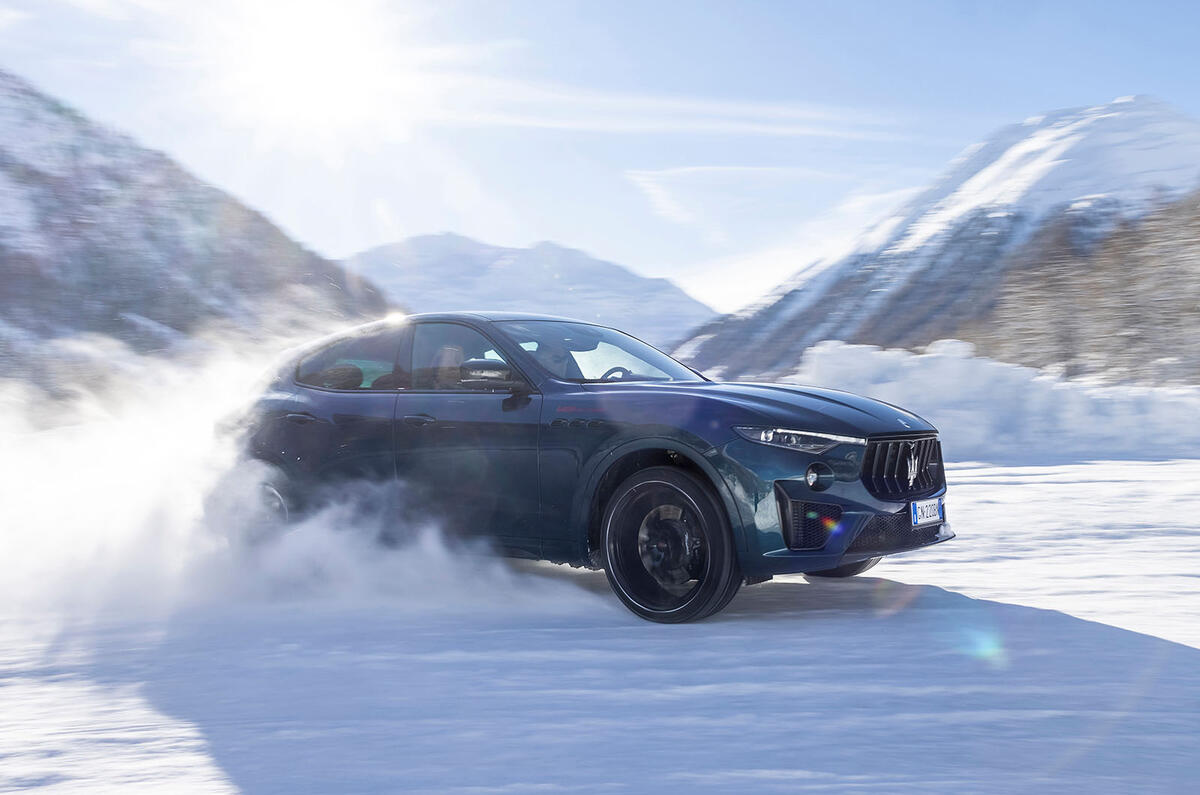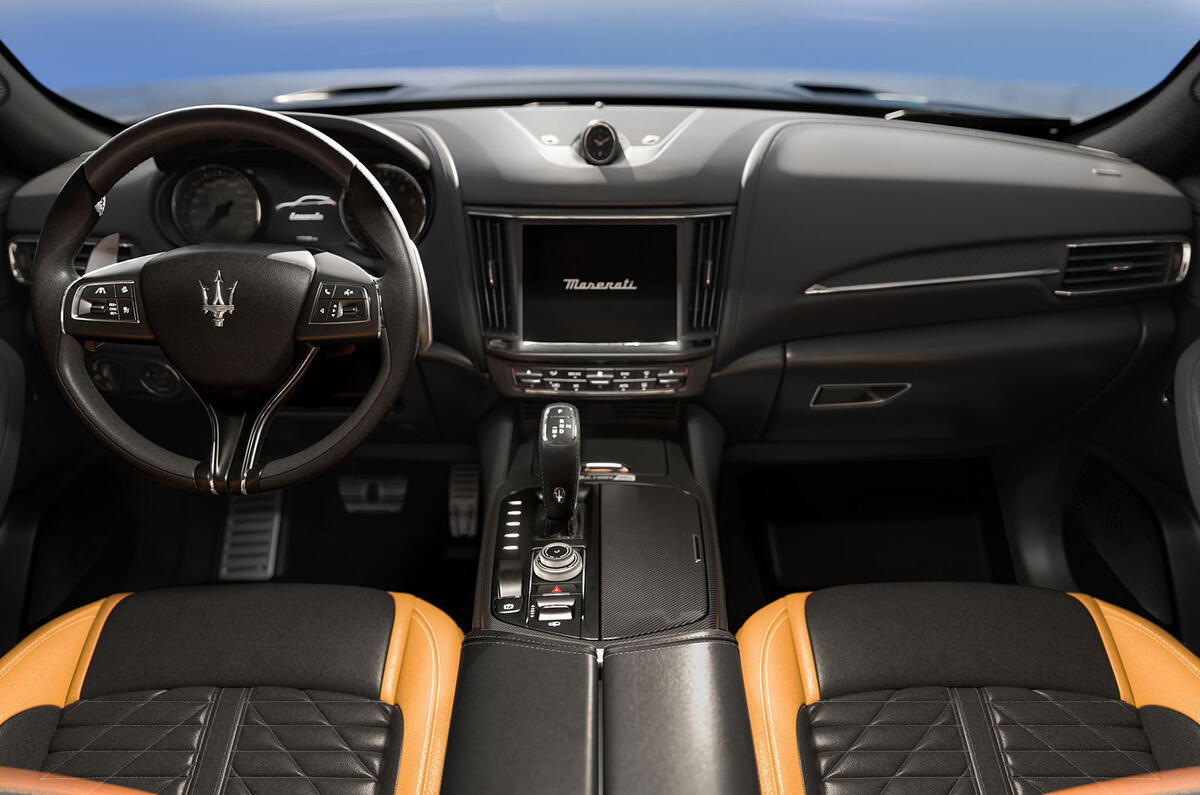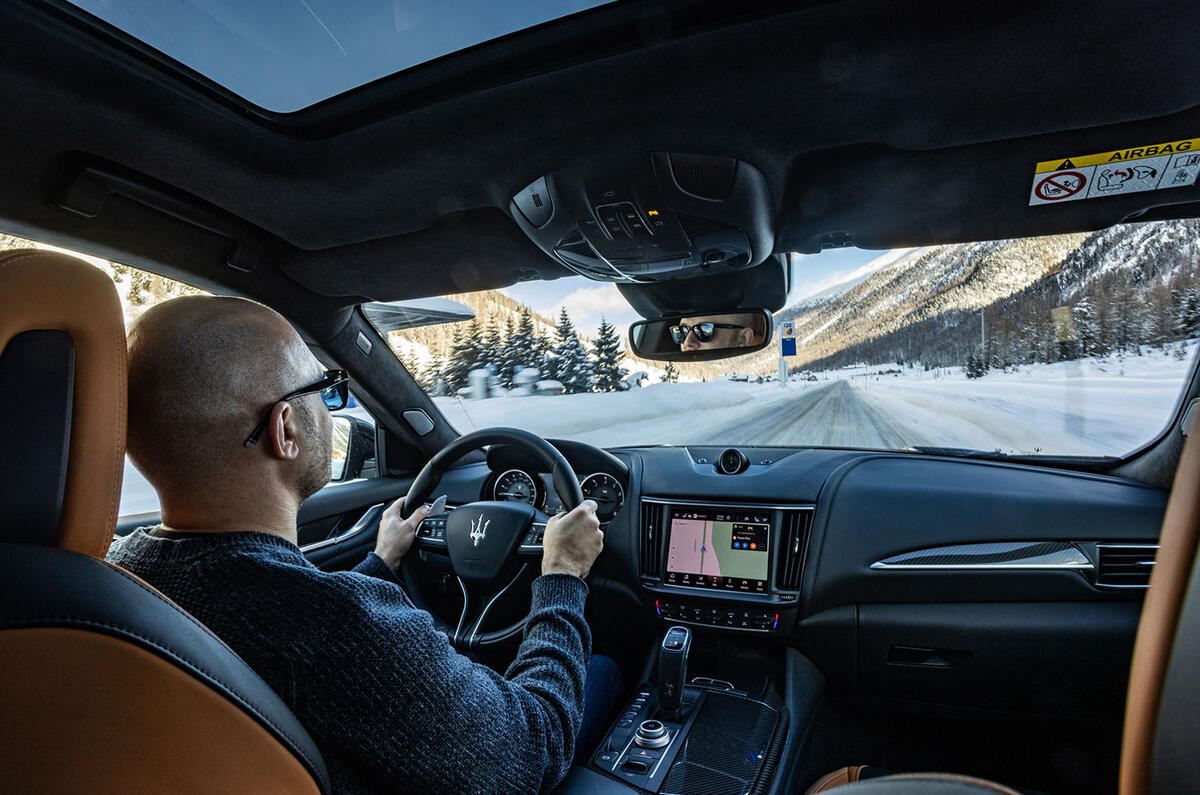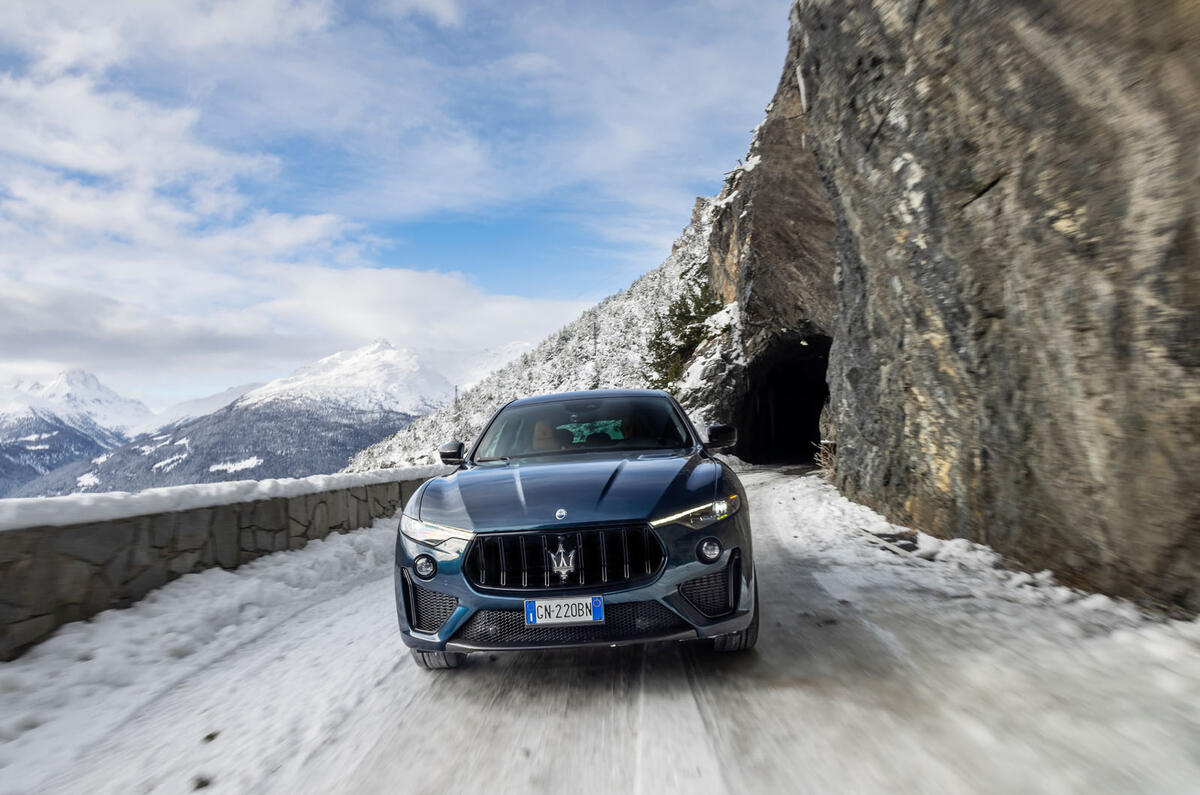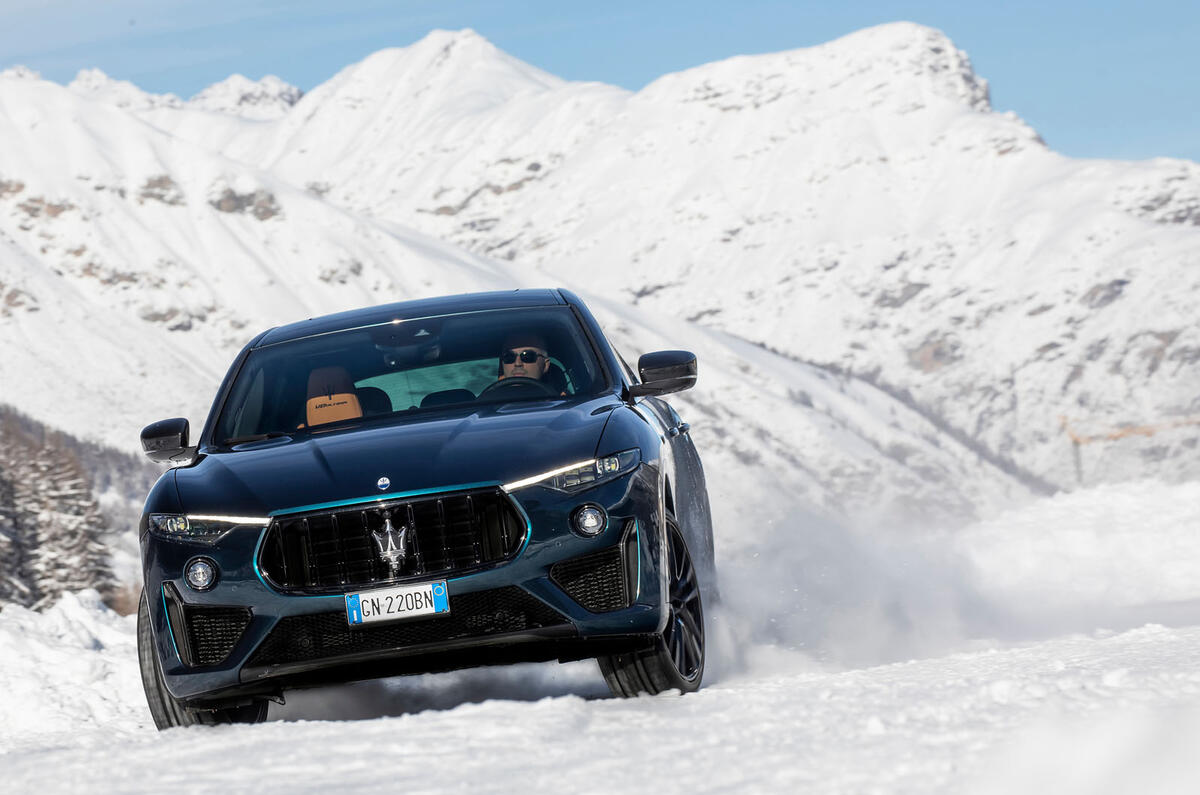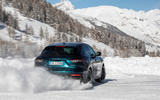When we first reviewed the Levante, we thought it had "only just enough sporting purpose and handling poise to lift it above the average big SUV". The large SUV market has only got tougher since, and it’s fair to say Maserati's biggest car is no star performer eight years on.
That's not to say the Levante's ride and handling is bad, merely that it doesn’t astound or astonish you with dextrous dynamics like the Cayenne typically does.
Its air suspension, which continually adjusts its ride height based on your speed, sets out to provide a laid-back sense of compliance when left in Comfort mode with limited success (which we will come on to). It comes at the cost of some lateral body control, making the car feel a little flighty over bumps, and more prone to roll than you expect it to be when cornering quickly.
Switch to Sport mode on the car’s Skyhook dampers and body control improves along with the steering weight (which is quite light initially), although the ride becomes notably less supple and settled and gets brittle at times.
That said, there's no four-wheel steer to help chamfer the edges off its 2.1-tonne kerb weight, while the rear-led balance of its 4WD system robs the Levante of some surefootedness in dicier conditions. However, it does offer good levels of grip, respectable body control and steering that can, at times, be encouragingly tactile.


